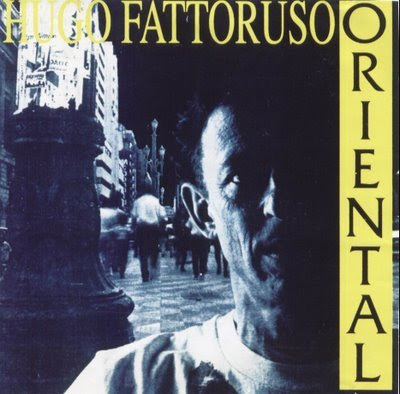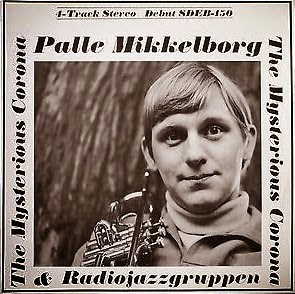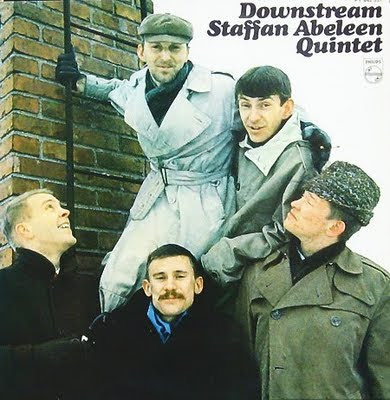HUGO FATTORUSO - ORIENTAL

Hugo Fattoruso for Som Gente Brazil from 1990.
Hugo Fattoruso : Keyboards,Piano,Voice,Percussion,Acoustic Guitar/José San Martin : Drums/Mauro Senise : Flute,Saxphone Soprano/Zeca Assumpção : Cello/Sizão Machado : Electric Bass/Ulisses Rocha : Guitar,Tambores Candombe/Dário Bracco : Tambor Piano/Fernando Banega : Tambor Chico/Jorge Luiz Gomes : Tambor Repique/Juan Angel : Tambor Piano/Juan Silva : Tambor Chico/Lobo Nuñes : Tambor Piano/Manoel Silva : Tambor Chico/Ruben Rada : Voz, Tambor Piano/Washington Ciruja : TamborRepique/Wilson Martirena : Tambor Repique
Tough latin fusion from Uruguay via Brazil.This one ranges from the candombe rhythms of "Lonjas Del Cuareim" to the samba fusion bangers "Estrela Distante","O Sambinha" & "La Papa" to a post prog rock work out on "Feria de Tristan Narvaja".
Here's a potted bio of Fattoruso from bigworldmusic.com
Hugo Fattoruso, born in Montevideo, Uruguay, began his musical career as a prodigious and somewhat reluctant piano student at the age of four. By the time he was nine his father Antonio formed El Trio Fattoruso by drafting Hugo's younger brother Jorge on drums, with Hugo on accordion and Antonio on "inverted bucket bass" (using a broom as the neck, and a cord as the instrument's single string). This trio performed in street festivals, covering the variety of styles used in Uruguay's carnivals (boleros, murgas, tangos, etc.), giving Hugo an education in the rich harmonic stuff of disparate musical styles.
At the age of 16 Hugo moved to the upright bass and began his tenure as the under-aged member of The Hot Blowers, a swing band that toured throughout Latin America in the late 1950s. This period could be seen as a second important milestone in Hugo's harmonic education, hammering home the concepts of improvisation and musical interplay.
By the early 1960s, rock'n'roll began to shake the world's foundation, and Hugo set out to express himself in that medium by forming Los Shakers, where he and his brother shared song writing, singing and guitar responsibilities. Los Shakers, Hugo Fattoruso (guitar, voice), Osvaldo Fattoruso (guitar, voice), Roberto "Pelin" Capobianco (bass, voice), Carlos "Caio" Vila (drums, voice), were a huge success throughout Latin America, as they were able to mold the complexities of bossa's harmonies, Uruguay's urban song style, candombe rhythms and the backbeat of rock into a new and contagious form.
By the late 1960s the influence of jazz, and of the Afro-Uruguayan rhythm of candombe, took Hugo to New York City, where he formed the group Opa. In Opa Hugo played keyboards and sang, while his brother played drums, and childhood friend Ringo Thielmann played bass. Opa's mixture of jazz, rock, Brazilian harmonies and rhythms, and Uruguay's African-flavored music (candombe) gave this band a distinctive voice, and garnered them recognition among musicians in the then growing "Latin jazz" scene. Opa released two albums on their own, 'Goldenwings' and 'Magic Time'. Opa's music served to influence the next generation of Uruguayan musicians, continuing the Fattoruso's impact on Uruguayan musical culture.
From that point on Hugo travelled the U.S. and worked with a variety of artists, ranging from Hermeto Pascoal to Ron Carter to The Dixie Dregs. After working in the U.S. with Milton Nascimento, Hugo spent several years living in Rio de Janeiro, where he worked with several prominent Brazilian artists including Djavan, Geraldo Azevedo, Chico Buarque de Holanda, Nana Vasconcelos and Toninho Horta. He has recorded extensively with Milton Nascimento, on the records "Milton", "Journey To Dawn", "Planeta Blue Na Estrada Do Sol", "Angelus", and "Nascimento", winner of the 1997 World Music Grammy Award. In addition to his piano and accordion playing, the compositions on the release "Nascimento" were co-arranged by Milton and Hugo.


